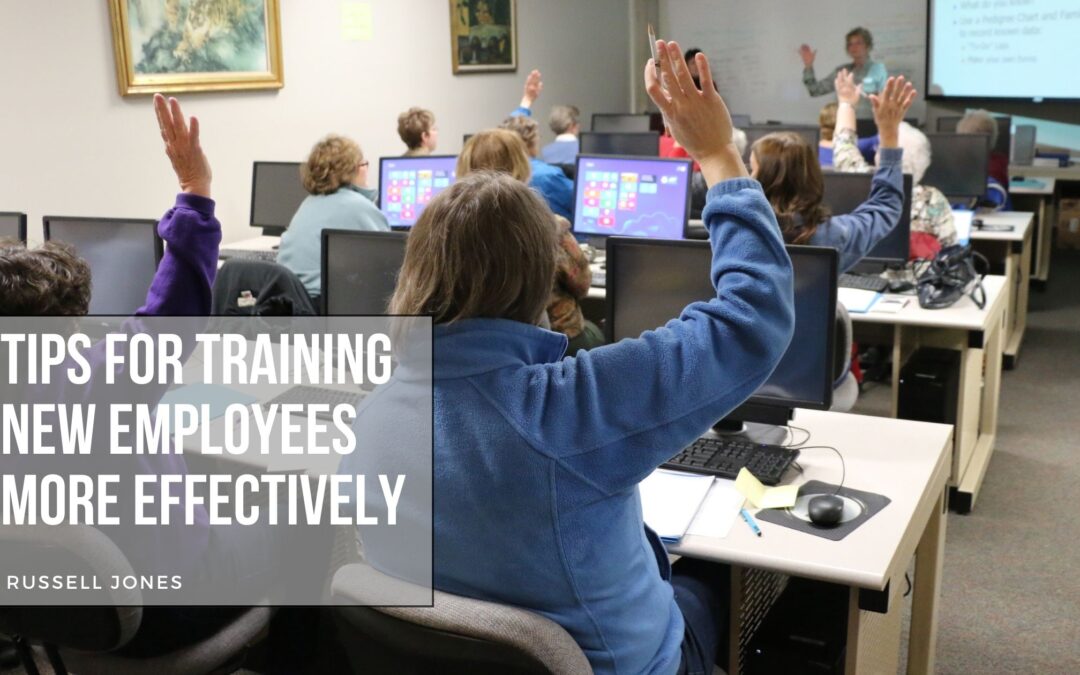Training new employees is the cornerstone of building a solid foundation for your business’s future. It is not just about making newcomers familiar with company policies or routines; it’s integrating them into the corporate culture and aligning them with the organizational goals. Practical training can enhance productivity, improve job satisfaction, and reduce turnover rates, which are all crucial metrics for a successful business. With the rapid changes in workplace dynamics and technology, traditional training methods may no longer suffice. Instead, a more sophisticated, understanding and well-structured approach is required. An effective training program communicates expectations, builds competencies, and establishes a support system for continuous learning and development.
The ethos of employee training has evolved significantly with new industries, technologies, and generational workforces. Historically, exercise might have consisted of a simple orientation session followed by a “learn as you go” approach. However, today’s competitive business environment demands a more proactive and structured strategy. The costs of employee turnover highlight the urgency for practical training—poorly trained employees are often disengaged and more likely to leave, resulting in a costly cycle of rehiring and retraining. The background of a robust training program begins with understanding adult learning principles and recognizing adult students bring a wealth of experience and expectations that must be respected and integrated into the training process. They prefer to learn in an environment that is relevant, engaging, self-directed, and practical. Realizing that adequate training is not a one-size-fits-all process but rather a tailored experience is the foundation upon which successful employee development is built. In this context, we’ll explore the pillars of practical training that cater to a dynamic and diverse workforce.
The first critical component in training new employees effectively is designing an inclusive and comprehensive orientation program. This is not merely about introducing the team or touring the office—it is a strategic process that lays the groundwork for a new hire’s career path within the company. A well-crafted orientation program should include an overview of the company culture, mission, and values. Moreover, this phase should address the psychological needs of newcomers, helping them feel valued and welcomed. An often overlooked aspect of orientation is the establishment of clear communication channels. New employees should know whom to approach for assistance and how their performance will be evaluated. They should have the necessary tools, access to relevant software, and a clear understanding of their responsibilities. Integrating interactive elements such as simulations, role-playing, and group activities can foster a sense of engagement and allow practical application of knowledge, making the orientation a cornerstone for further training endeavors.
Beyond orientation, continuous skill development and education are vital. The second pivotal point in training new employees is creating ongoing learning opportunities. This can be achieved through various methods, such as mentorship programs, workshops, and online courses. The focus here is on fostering a culture of learning and growth, not just completing a set of training sessions. A mentorship program, for instance, pairs a new employee with a seasoned professional who can offer guidance, share experiences, and provide support as the new hire navigates through the initial months. This relationship encourages not only the transfer of tacit knowledge but also strengthens team bonds and boosts morale.
Similarly, workshops that are regularly updated to reflect the latest industry standards keep employees abreast of new developments and best practices. Online courses offer flexibility and allow employees to learn independently, accommodating different learning styles and schedules. Collectively, these strategies promote a workplace environment where learning is ongoing, supported, and recognized as integral to personal and company success. The third essential element in training new employees is performance tracking and feedback. Monitoring progress through regular assessments helps to gauge the effectiveness of the training methods and the employee’s understanding of their role. These assessments must be constructive and aligned with the individual’s career goals and the company’s objectives.
Feedback should be timely, specific, and delivered in a manner that encourages improvement and learning. Constructive criticism, when paired with positive reinforcement, can significantly boost an employee’s confidence and motivation. It’s also important to recognize that feedback is a two-way street; new employees should feel comfortable expressing their concerns and suggestions regarding the training process. This continuous loop of performance evaluation and feedback ensures that training is not a one-off event but a stepping stone to higher competence and job mastery. It helps trainers fine-tune programs to suit individual needs better and adapt to changing industry trends, thereby sustaining a workforce that is not only skilled but also resilient and adaptable.
In conclusion, training new employees is a multifaceted endeavor that extends beyond the initial days of orientation. It is a continuous commitment to employee development, engagement, and empowerment. An effective training program recognizes the individuality of learners, the importance of culture integration, the necessity for continuous learning opportunities, and the value of performance feedback. By investing in comprehensive and ongoing training, companies not only nurture their talent but also enhance their competitive edge. In today’s fast-paced business world, where change is the only constant, organizations that prioritize practical employee training are the ones that thrive. They cultivate not just a workforce but a dynamic learning community that drives innovation, excellence, and sustainable growth. As such, the strategies outlined herein are not merely recommendations; they are imperatives for a forward-thinking business’s operational playbook.

